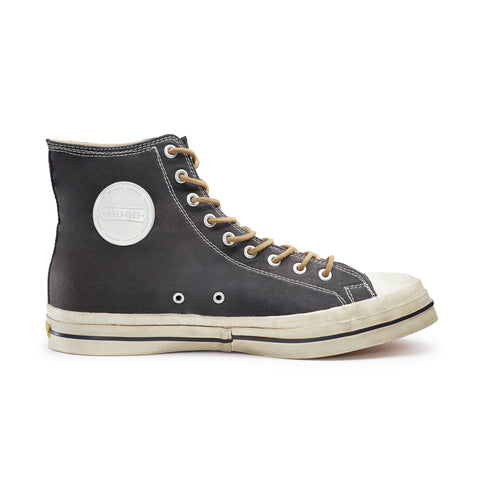1929
MERGER WITH B.F. GOODRICH – The year following World War I, with the industrial revolution in full swing and dealers in need of replenishing their stocks, Hood’s production boomed, spiking at more than 90,000 pairs per day for several weeks in 1920. At that time, it was the highest quantity of footwear produced at any one plant in the world.
In 1929, Hood Rubber Co. operated the largest footwear plant in the world – turning out an average of 75,000 pairs of shoes a day.

Hood products were being distributed through a sales organization with 24 branches in large cities across the United States. Additionally, the international export of goods, especially canvas footwear, substantially increased Hood’s sales.
In just 33 years, Hood had achieved world renown. With products being exported to 84 countries, the company’s gross sales were nearly $30 million (approximately the equivalent of $400 million in today’s dollars. However, in his shareholder letter, Hood Rubber Co. president Frederic Hood explained that, for the first time, both the Company’s overall sales volume and its average sales price had declined. Combined with write-downs, the Company incurred a $1 million net loss.
An unusually mild winter in 1928 was partially to blame for the decline. A more significant factor, though, was eroded product margins on crude rubber inventory that had been purchased at a premium. Under determined leadership, Hood carried on.
In the late 1920s, the executives at the B.F. Goodrich Company in Akron, Ohio, began investigating the possibility of a merger with Hood. One of the “Big Four” tire manufacturers, B.F. Goodrich was also one of the most significant producers of rubber footwear in the United States. In Hood, they saw a big opportunity to diversify the companies’ respective rubber businesses while lowering overall costs and, hopefully, doubling its share of the U.S. footwear market. A merger between Hood Rubber Co. and B.F. Goodrich Company consummated on Aug. 31, 1929, for an estimated $50 million (approximately $750 million in today’s dollars). Hood Rubber Co. was renamed Hood Rubber Co., Inc. and continued operations as the footwear division of the B.F. Goodrich Company.
In June 1930, B.F. Goodrich Company president J.D. Tew announced the transfer of all B.F. Goodrich footwear manufacturing activities to Hood’s Watertown plant, and the transfer of all Hood tire and mechanical goods manufacturing to B.F. Goodrich’s Akron plant. Key B.F. Goodrich footwear executives and supervisors also transitioned to the eastern plant. Consolidating operations was intended to help increase efficiency in all product segments. To fortify the new partnership, Hood and B.F. Goodrich participated in joint advertising campaigns promoting both brands’ footwear in print for the next 35 years.

